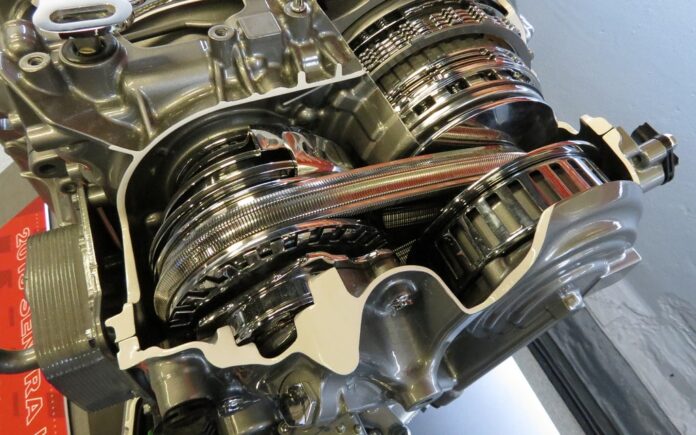If you are shopping for a new or used car and see that a car has a continuously variable transmission (CVT), is that a plus or a minus in your mind?
A CVT is an automatic transmission that instead of using fixed gears uses two pulleys connected by a steel band, with the diameter of one of the pulleys continually adjusting as needed to provide an optimal gear “ratio” to transfer power to the car’s tires.
Many cars on the market now employ a CVT and with automakers like Nissan, Subaru, and Toyota embracing it across their model lineups. Others are likely to follow as fuel efficiency gains and manufacturing costs for multi-gear transmissions begin to weigh in.
Advantages of CVTs
Because continuously variable transmissions are built with fewer parts compared to conventional transmissions, they are less expensive to manufacture. This savings is passed along to consumers in a car’s selling price. Acceleration stays in a “sweet spot” to minimize wasted power, thus improving a vehicle’s fuel efficiency. Continuously Variable Transmissions have one key advantage over their automatic and manual counterparts. When driving up hills, where traditional automatics can struggle, a CVT can seamlessly provide power without shifting.
Disadvantages of CVTs
Some of the criticism of CVTs can be attributed to earlier generations of the technology. As reviewers point out, the newer CVTs are more reliable. Some people find the steady acceleration, and lack of revv or gear changes to be “boring.” There are also questions about reliability as a vehicle’s adds a lot of miles to the odometer, since it’s costly to have to replace a transmission. Plus, some of the initial savings of buying a car with CVTs is lost with the requirements of transmission fluid changes at regular intervals.
Still, CVTs are having a tough time breaking into the market. It turns out that many drivers don’t like the loud and strange noise of their car’s engine revving wildly. Many drivers liken the sound, and the feeling, to that of a slipping clutch. Additionally, CVTs are usually less likely to be paired with higher horsepower, or higher torque engines.
Lastly, not all CVTs are well equipped to deal with towing. Additionally, the reliability of the modern CVT has yet to be tested. The Nissan Murano was the first car Nissan offered with only a CVT, and it had some pretty serious problems. Some were so bad that the whole transmission had to be replaced.
Summary
There are a few advantages to getting a vehicle with a CVT: It’s good on gas, gives a relatively smooth ride, and is versatile enough for daily driving. It also has a few drawbacks. It’s nowhere near as fun or engaging as a dual clutch automatic or manual transmission. It can also make quite a racket when accelerating hard.








